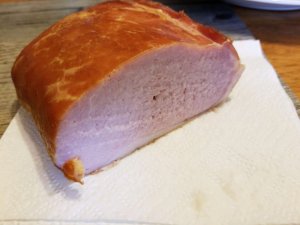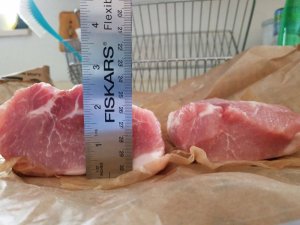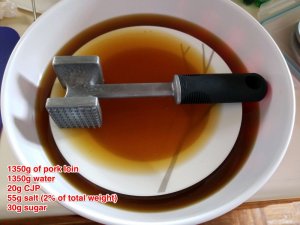John, this is Oleg's first attempt at using CJP. There were previous posts on the issues with CJP and collectively, recommendations for safe use were provided. We already beat up Oleg for messing with this stuff.
Ok, to the matter at hand. Curing 1/2" per day is, generally, for Dry Rub Curing and Brines with a salt concentration of 1Cup Salt per Gallon water.As the amount of salt is decreased, it takes longer for dispersion and osmosis to move the salt and Cure throughout the meat. I too prefer low sodium brines, 2%, and go by the commonly recommended 7 days per inch thickness.
Texture wise, Toughness in lean meat, like a Loin smoked to 145° is more determined by the meat itself. Since loin does not have the connective tissue or fat content of other pork cuts. The age of the animal at slaughter will have an impact. Younger is more tender. Not to mention, sometimes no matter what you do, a given piece of meat may just be Tough. The next may be Butter Soft cured and cooked by the exact same method.
The ONLY thing to worry about in whole muscle pork is Trichinosis. Modern Hog Husbandry has eliminated worries over Trichinella from reputable produces. Additionally cooking pork to 131° and holding it there 6 minutes, kills the parasite. As does 140° for 2 minutes and 145°F for 60 seconds. Seems most rest meat longer than these times carrying from the smoker to the dinner table and carving. So even eating Med/Rare Pork isn't an issue, if you like that doneness. If anybody is still worried Freezing following the parameters below, kills Trichinella just as effectively as cooking.
Oleg, you can try cooking the next piece less, 140°F, but it will be more pink and may not be any more tender...JJ
Freezing kills Trichinella spiralis larvae in pork. Pork less than 6 inches thick can be made safe if frozen to minus 20 degrees F for 6 days, -10 degrees F for 10 days, or 5 degrees F for 20 days. However, freezing might not kill other species and types of Trichinella found in wild game, such as bear, wolverine or fox.








